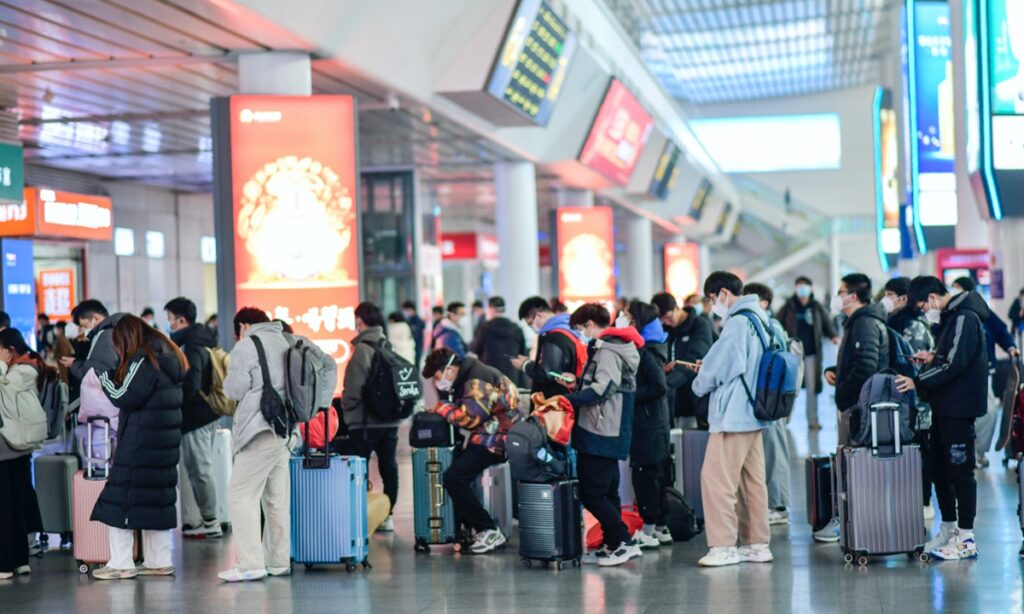As China has changed the name of the disease from “novel coronavirus pneumonia” to “novel coronavirus infection” and downgraded the management of COVID-19 from Class A to Class B starting from January 8, the country will no longer conduct nucleic acid testing for all inbound travelers, and will resume outbound travel for Chinese citizens in an orderly manner. This is the biggest strategic adjustment of the country’s epidemic prevention and control policy in the past three years, which has comprehensively taken into consideration factors such as virus characteristics, epidemic situation, vaccination, medical resources and experiences. China’s epidemic prevention and control work has ever since entered a new stage.
According to the Overall Plan for Implementing Class B Infectious Disease Management for COVID-19 Infections issued by the National Health Commission, the goal of the epidemic prevention and control work has changed from “preventing infection” into “protecting health and preventing severe cases.” This is regarded as the most significant feature of the adjustment. The plan puts forward 12 main measures, most of which are related to the prevention efforts and medical services for the vulnerable and susceptible groups. This direction is very clear and has great feasibility. It is not difficult to see that to smoothly realize the transformation of policy goals and to effectively respond to risks that may arise after the adjustments is an important guiding principle for China to implement the “Class B management.”
Under the new situation, the focus of China’s epidemic prevention is “bottom protection,” which means to protect the most vulnerable key groups, while maximizing the release of social vitality. This is not only the meaning of “People First, Life First,” but also an objective requirement for effectively coordinating epidemic prevention and control and economic and social development. In particular, with the further deepening of the understanding of the coronavirus and the disease, the reduction of the harmfulness of the disease, the effective supply of vaccines and drugs, the improvement of emergency response capabilities, and so on and so forth, we have sufficient confidence and conditions to do so. In fact, over the past three years, we have been actively and steadily adjusting prevention and control measures based on changes in the situation, trying our best to balance and take into account the interests of the public. Seeking truth from facts is not only our consistent attitude, but also a summary of past experiences.
China’s epidemic prevention and control is indeed “unique” in the world. With a huge population over 1.4 billion and a pivotal economic status in the world, it’s inevitable that the difficulty of epidemic prevention and control in this country will be one of the highest. In this process, it must be very careful, as if treading on thin ice, otherwise, a huge humanitarian disaster might occur, as well as a “tsunami” that will bring the global economy to a halt. In this sense, there is almost no room for “trial and error” in China’s prevention and control, and it must make steady progress. This major adjustment has declared that China has basically passed the most deadly and dangerous moment of the virus and is entering a new phase of more open development.
Judging from the public opinion reactions at home and abroad this time, although there are various voices, the welcome and expectations for the adjustment clearly are dominant. According to statistics from a travel website, within one hour after the announcement of the new policy was made, searches for popular overseas travel destinations on the platform soared 10 times. Travel and consumer stocks in Asia rallied after the plan was released, while Chinese stocks also rose for two days. Some consumer demand that has been suppressed in the past three years has ushered in explosive growth, and production, life and people exchanges that have been disrupted by the epidemic in the past three years will gradually return to normal. This is undoubtedly good news for China and for the whole world.
Of course, the pandemic is not over yet, and the direction of the epidemic situation is still uncertain. The change in the goal of epidemic prevention also means that a new examination paper is put in front of us. It is not easy for China, and it still has a lot to do. Among them, the focus will be on the preparation of medical treatment resources, efforts to ensure the needs of the masses for medication, efforts to protect and treat key populations such as the elderly and children, and effectively strengthening the prevention and control of outbreaks in rural areas. In other words, after the new coronavirus infection management is adjusted to Class B, it is by no means left alone, and by no means the withdrawal of all prevention and control measures. We will continue to strengthen management, services and guarantees.
We pointed out in an earlier editorial that China’s prevention and control policy has been continuously adjusted for the past three years, but its original intention and logic have never changed. At the same time, we have also noticed that those who are prejudiced and malicious toward China regard every optimization and adjustment of China’s epidemic prevention and control policy as an opportunity to discredit and attack China. They say it is wrong to have strict management, and it is also wrong to loosen it. They can always find something. However, we will not be held back by them in our policymaking and in the pace and rhythm with which we move forward.
(Global Times)




